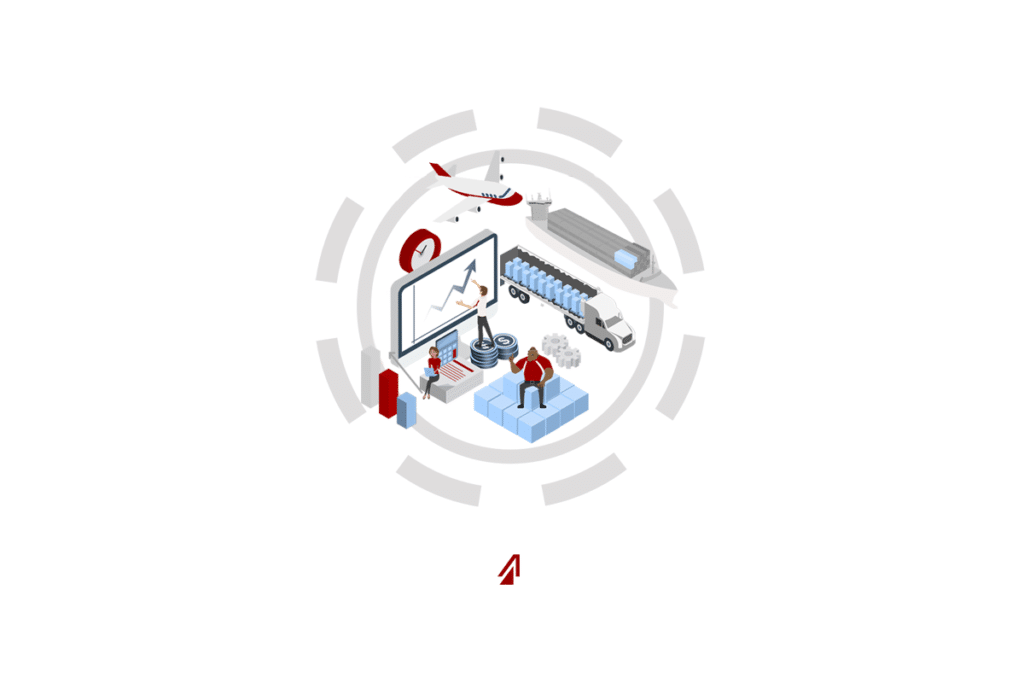Coronavirus
A major COVID concern for April has been the continued lockdown of Shanghai, China. Shanghai is responsible for as much as 20% of Chinese import and export trade as well as a significant hub for manufacturing. With the continued lockdowns and other public health regulations, a large part of the manufacturing and shipping industries are slowing to a halt. Many shipping companies are reporting a 30% drop in efficiency due to lack of capacity from the Port of Shanghai and other hubs. The lockdowns are expected to end June 1.
GDP
Official numbers are confirmed and the US economic grown declined by 1.5% in Q1. The largest contributor to the drag came from trade. Imports grew more than anticipated to 18.3% and exports less than expected to -5.4%.
Employment
According to the Bureau of Labor Statistics, the employment rate fell .1% to 60% in April. The unemployment rate maintained at 3.6%. The highest job growth sectors also maintained in leisure and hospitality, professional and business services, retail trade, and manufacturing.
Inflation
Inflation slowed in April to 8.3% from 8.5 % in March. Volatile sectors like energy prices also slowed to less than anticipated rates (30.3% instead of projected 32%). Other sectors, however, like food grew 9.4% – the most since April of 1981. Prices for shelter and new vehicles also rose dramatically. Experts project that the slowdown in April is marking a peak for inflation but suggest that the inflation rate is unlikely to fall below pre-pandemic levels soon. Projections are that the rate will remain above the Fed’s targeted 2% for as long as supply chain disruptions persist, and food and energy prices remain elevated.
Manufacturing
Manufacturing PMI increased again in April to a 59.2 point high. This reflects a robust growth due to stronger manufacturing outputs and faster employment upturns.
Not every aspect was positive for April though. Input costs due to inflation and supply chain issues also rose to their highest level since November 2021. According to Trading Economics, “business sentiment was at the lowest in seven months as hopes of new client acquisitions and greater demand were dampened by inflationary fears.”
Interest Rates
The Federal Reserve Board did not meet in April to discuss the interest rate but is expected to raise rates as much as 1% in May.
Capacity
In April, both truckload capacity and demand fell. According to DAT Trendlines, April capacity fell -2.8% from March, but shows 9.8% higher capacity than the same time last year. Fortunately, truckload demand fell approximately 27% in April as well.
Truckload capacity shortages in Shanghai, China have also affected vessel wait times at major Chinese ports like Shanghai and Ningbo. Many vessels and truckload shipments were rerouted to Ningbo to compensate for the lockdown in Shanghai, causing it to become congested. Congestion is expected to worsen as China eases lockdown restrictions and freight service demands increase. Similar fears are expected for vessels leaving China for US ports.
Regulations
In early April, Texas governor, Greg Abbott (R) stated that Texas will uphold the Title 42 policy that the Biden administration would be revoking later in May. This caused an uproar among Mexican truck drivers, affecting a protest that blocked two major border crossings in and out of Mexico – the Pharr International Bridge and commercial truck lanes at Ysleta Port of Entry. Drivers blocked commercial lanes, causing delays of 9 hours or longer. Title 42 is a public health law preventing asylum seekers from crossing into the US to prevent the spread of COVID-19.
Rates
Shipment rates fell again in April. According to DAT, with the decline in demand, the price of spot quotes fell approximately 7.5% since March. Overall, shipment rates are still nearly 8% higher than April 2021.
Behaviors
US Consumer spending is up this year – nearly $106.4 billion in Q1 of 2022 from Q4 2021.
Technology
The war in Ukraine is worsening the semiconductor shortage. Many raw material suppliers’ supply chains are being disrupted by the conflict and are causing greater delays to production and ultimately the market. A 3M facility in Belgium (which is responsible for 80% of the world’s supply of coolant) halted operations, due to the conflict, causing major disruptions for companies like Samsung Electronics, Intel, and Taiwan Semiconductor Manufacturing Company. The war has also disrupted production of crucial chemicals like neon and argon. Experts state these delays and disruptions will have a massive impact on the semiconductor for years to come.
Fuel Impact
Fuel prices have risen .3% since March but have climbed a staggering 63.6% since April 2021.
Driver Concerns
Truck drivers are filing record numbers of coercion complaints in 2022. According to the Federal Motor Carrier Safety Administration (FMCSA) coercion occurs when a motor carrier, shipper, receiver or transportation intermediary “threatens to withhold work from, take employment action against, or punish a driver for refusing to operate in violation of certain provisions of the Federal Motor Carrier Safety Regulations (FMCSRs), Hazardous Materials Regulations (HMRs), and the Federal Motor Carrier Commercial Regulations (FMCCRs).”
As of April 8, 492 complaints have been filed. This is more than the total number of complaints filed in 2016 and 2017, when the FMCSA began compiling them, and half as many as the number of complaints filed each year since. At this rate, complaints are expected to reach 1800+ by the end of 2022.
Many of the complaints are coercions to commit ELD violations or continue driving when drivers face fatigue.



